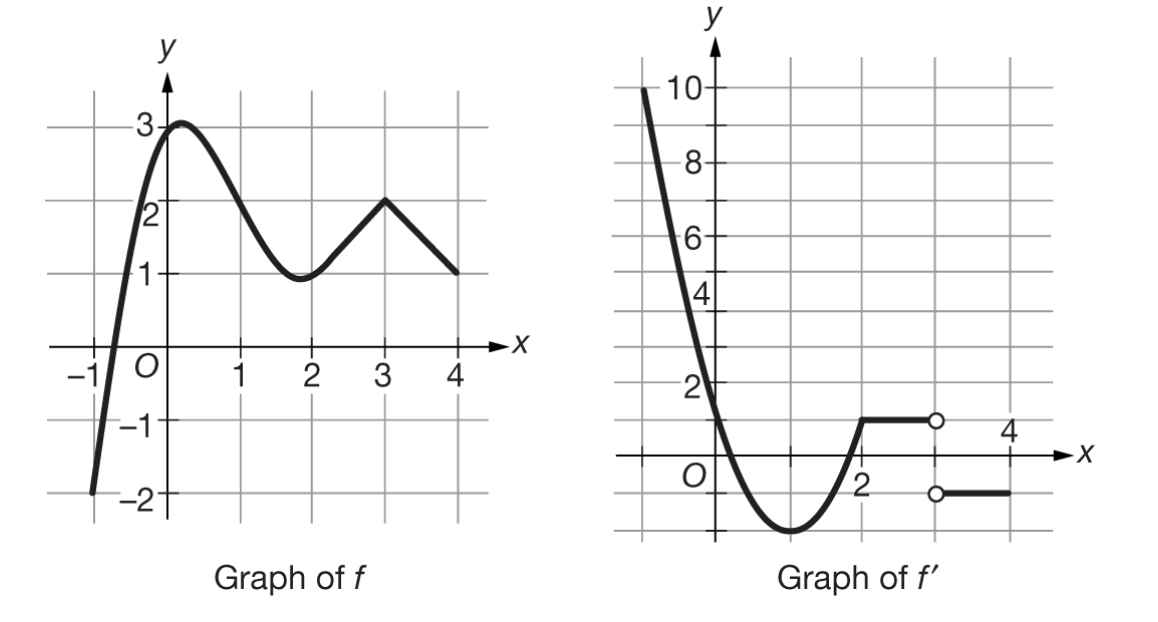The graphs of the function and its derivative are shown above for -1≤x≤4 . (a) Find the average rate of change of f over the interval -1≤x≤4. For how many values of x in the interval -1≤x≤4 does the instantaneous rate of change of f equal the average rate of change of f over that interval? (b) Write an equation for the line tangent to the graph of f at x = 1 (c) For each of lim x→2 (f(x)−f(2))/x−2 and lim x→3 (f(x)−f(3))/x−3, find the value or give a reason why it does not exist.
The graphs of the function and its derivative are shown above for -1≤x≤4 . (a) Find the average rate of change of f over the interval -1≤x≤4. For how many values of x in the interval -1≤x≤4 does the instantaneous rate of change of f equal the average rate of change of f over that interval? (b) Write an equation for the line tangent to the graph of f at x = 1 (c) For each of lim x→2 (f(x)−f(2))/x−2 and lim x→3 (f(x)−f(3))/x−3, find the value or give a reason why it does not exist.
Mathematics For Machine Technology
8th Edition
ISBN:9781337798310
Author:Peterson, John.
Publisher:Peterson, John.
Chapter58: Achievement Review—section Five
Section: Chapter Questions
Problem 30AR: Determine dimension x to 3 decimal places.
Related questions
Question
100%
The graphs of the function and its derivative are shown above for -1≤x≤4 .
(a) Find the average rate of change of f over the interval -1≤x≤4. For how many values of x in the interval -1≤x≤4 does the instantaneous rate of change of f equal the average rate of change of f over that interval?
(b) Write an equation for the line tangent to the graph of f at x = 1
(c) For each of lim x→2 (f(x)−f(2))/x−2 and lim x→3 (f(x)−f(3))/x−3, find the value or give a reason why it does not exist.
(d) Let g be the function defined by g(x)=e^xf(x). Find g′(0).

Transcribed Image Text:T
IN
O
A
2
Graph of f
3
4
X
y
10-
-8-
6
41
2
O
Graph of f'
·X
Expert Solution
This question has been solved!
Explore an expertly crafted, step-by-step solution for a thorough understanding of key concepts.
This is a popular solution!
Trending now
This is a popular solution!
Step by step
Solved in 3 steps with 6 images

Recommended textbooks for you

Mathematics For Machine Technology
Advanced Math
ISBN:
9781337798310
Author:
Peterson, John.
Publisher:
Cengage Learning,

Mathematics For Machine Technology
Advanced Math
ISBN:
9781337798310
Author:
Peterson, John.
Publisher:
Cengage Learning,